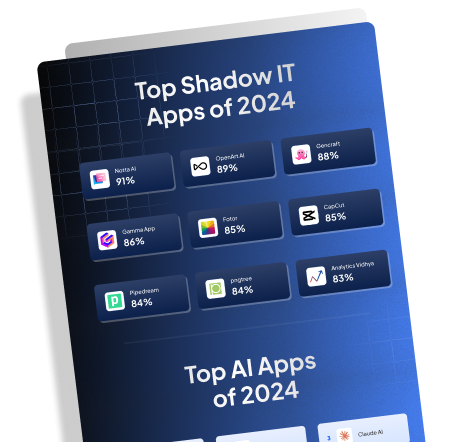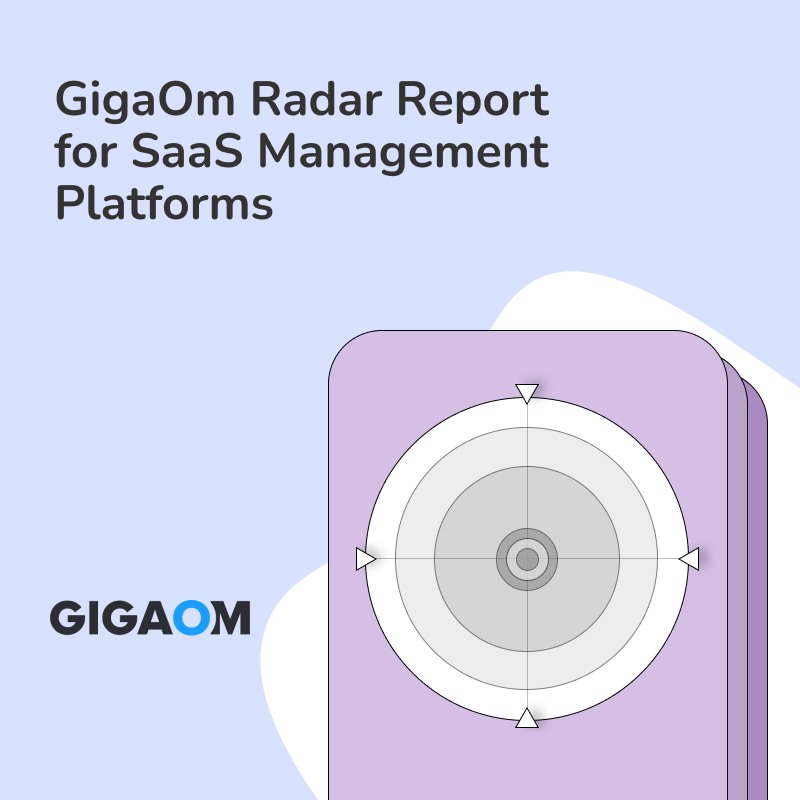A Data Loss Prevention Policy (DLP) is a comprehensive structure organizations adopt to minimize the risk of losing potentially sensitive data. DLP incorporates data protection guidelines, employee data handling rules, information security policies, and data backup and recovery protocols. It is a crucial component of the data governance policy aimed at ensuring data privacy compliance alongside aiding in data breach prevention measures.
Note: Protect your organization’s sensitive data from loss or leakage and say goodbye to the headaches of managing data protection guidelines and employee handling rules manually. Torii automates these processes, providing unparalleled visibility into your SaaS landscape and identifying Shadow IT risks. Secure your data now with Torii’s Shadow IT Discovery
But have you ever wondered what could happen if a data loss prevention policy wasn’t in place? With a robust DLP, companies can avoid data leakage and breaches, leading to significant economic loss and reputational damage. Therefore, it’s crucial to have an effective access control policy and data encryption requirements to secure sensitive information.
Data Guidelines and Threats: Data classification guidelines play a significant role in a DLP, helping organizations understand their data’s importance and sensitivity levels. A robust data retention policy is also a part of the DLP, enforcing how long data should be stored and ensuring it doesn’t fall into the wrong hands. To prevent internal threats, bolstering security awareness training is another vital component.
Incident Response Procedures: The DLP should also establish strict incident response procedures for managing any potential data loss incident. This framework should include data loss incident investigation protocols, data recovery processes, and security incident reporting mechanisms to ensure exposed vulnerabilities can be addressed swiftly and effectively.
Data Audit and Monitoring: Data audit and monitoring practices are integral in maintaining a DLP, as these allow for consistent oversight of data usage and movement, enforcing data security best practices. Finally, physical security measures must be considered in the DLP, as data protection isn’t solely a digital issue.
A Data Loss Prevention Policy is a multifaceted, dynamic initiative that requires careful planning and execution, ensuring the security of sensitive assets and maintaining trust with stakeholders.
Examples of Data Loss Prevention Policy (DLP)
Banking Sector
One real-world example of a data loss prevention policy is in the banking sector. Banks like JP Morgan Chase employ advanced data loss prevention measures where encryption is applied to share sensitive information. They use the Identity and Access Management (IAM) policy, meaning only authorized personnel can access, read, or modify the information. Securing access points and encrypting data at rest and in transit dramatically reduces the possibility of information leakage, providing a layer of defense against unwanted data loss.
Healthcare Industry
A second example can be found in the healthcare industry. Mayo Clinic, an eminent healthcare organization, uses data loss prevention strategies to comply with the Health Insurance Portability and Accountability Act (HIPAA). A careful data classification policy system is implemented with different protection levels for different types of data, e.g., patient records, research data, and staff information. Automated alerts are set for unauthorized access attempts, and password policies are strictly followed. This safeguards private patient data from being lost, ensuring the organization stays compliant with HIPAA.
Information Technology Setting
Lastly, the IT industry giant Microsoft has its data loss prevention policy. The policy is automated and based on machine learning algorithms. When the system detects attempts to transfer or share sensitive company data outside the network, it automatically blocks the action and reports to the IT department. This technology-driven approach helps bolster security, preventing data loss and maintaining the company’s competitive edge.
Best Practices for Data Loss Prevention Policy (DLP)
Creating an effective Data Loss Prevention Policy entails several best practices for information security.
Establish Data Classification Guidelines
First, it is crucial to establish data classification guidelines to categorize data based on sensitivity level. This enables efficient data handling by employees alongside enforcing data protection guidelines. This categorization not only aids in preventing data leakage but also dictates the level of data encryption required for each information class.
Access Control Policies
Access control policies form another vital component of a Data Loss Prevention Policy. Such policies restrict access rights to sensitive data, thus reducing the chance of breaches. Robust password policies and two-factor authentication should be the norm for systems with critical data.
Initiation of Regular Data Backup and Recovery
Another pivotal element is the initiation of regular data backup and recovery procedures. Having scheduled automated backups ensures that data is safeguarded and easily recoverable in case of potential loss or breaches. The data recovery process should be well-documented and tested periodically to ensure its efficiency.
Regular Security Awareness Training
Regular security awareness training for all the stakeholders involved is necessary for implementing these policies efficiently. This includes providing insights into incident response procedures and data breach prevention measures. Formal sessions on data privacy compliance and ethics should also be conducted to educate and create a responsible data culture.
Data Audit and Monitoring
Regular data audits and monitoring are crucial to proactively identifying potential threats. This helps IT managers detect vulnerabilities, react promptly to any data loss incident investigation, and initiate security incident reporting.
Maintain Data Governance Policies
Data governance policy also has a role to play in prevention. Defining how data is collected, stored, and accessed can help maintain privacy and security. Additionally, defining a data retention policy helps to ensure data is not kept longer than necessary, reducing the risk of loss or breaches.
Conduct Physical Security Measures
Physical security measures also contribute to the overall security of the data. Secure locks, CCTV cameras, biometric access, etc., should be installed at data centers to prevent unauthorized access.
Use of Management Tools
Implementing these best practices could be simplified using a SaaS management platform like Torii. This platform automates operations, providing visibility over SaaS expenditures, and even allows IT to build custom plugins and integrations for cloud apps.
It also helps discover Shadow IT, thereby increasing efficiency and dramatically reducing the risk of data loss. Its SaaS cost savings and license optimization features further enhance the efficacy of data security best practices. The streamlined SaaS operations enabled by Torii are integral in maintaining robust data protection and contributing to an effective Data Loss Prevention Policy.
Related Tools for Data Loss Prevention Policy (DLP)
- Torii: A cloud-based tool for overseeing and optimizing Software as a Service (SaaS) usage and expenditures.
- Symantec Data Loss Prevention: A solution focused on preventing data loss through comprehensive monitoring and policy enforcement.
- McAfee Data Loss Prevention: An offering designed to safeguard sensitive data by identifying, monitoring, and protecting it across various endpoints and networks.
- Forcepoint Data Loss Prevention: A tool to prevent data breaches and insider threats by monitoring and controlling data movement across networks and devices.
- Trend Micro Data Loss Prevention: A solution that prevents data leaks and protects sensitive information through real-time monitoring and policy enforcement.
- Digital Guardian Data Loss Prevention: A platform designed to protect against data loss and insider threats by monitoring, classifying, and controlling sensitive data across endpoints, networks, and cloud environments.
- Code42 Data Loss Prevention: A solution focused on preventing data loss and facilitating recovery through endpoint backup and visibility.
- Proofpoint Data Loss Prevention: An offering designed to prevent data leaks and safeguard sensitive information through advanced threat detection and data protection policies.
- Varonis Data Loss Prevention: A platform to protect against data breaches and insider threats by monitoring and analyzing data access and usage patterns.
- Netskope Data Loss Prevention: A solution focused on preventing data loss and ensuring compliance by monitoring and controlling data movement across cloud applications and services.
- RSA Data Loss Prevention: An offering designed to protect against data breaches and compliance violations by monitoring, analyzing, and remediating data security risks.
- GTB Technologies Data Loss Prevention: A platform to prevent data loss and enforce data protection policies through content inspection and contextual analysis.
- Trustwave Data Loss Prevention: A solution focused on preventing breaches and ensuring regulatory compliance by monitoring, analyzing, and protecting sensitive data.
- Fasoo Data Loss Prevention: An offering designed to protect against data leaks and insider threats by encrypting, tracking, and controlling access to sensitive data.
- WatchGuard Data Loss Prevention: A platform to prevent data loss and enforce security policies through real-time monitoring and threat detection.
- Clearswift Data Loss Prevention: A solution focused on preventing data leaks and safeguarding sensitive information through content inspection and policy enforcement.
- Sophos Data Loss Prevention: An offering designed to protect against data breaches and insider threats by monitoring, analyzing, and controlling data movement across endpoints and networks.
- FireEye Data Loss Prevention: A platform to prevent data breaches and protect sensitive information through threat intelligence and advanced detection capabilities.
- Check Point Data Loss Prevention: A solution focused on preventing data leaks and ensuring compliance by monitoring, controlling, and securing data across networks and endpoints.
- Mimecast Data Loss Prevention: An offering designed to prevent data loss and safeguard sensitive information through e-mail security controls and threat intelligence.
Related Concepts in Data Loss Prevention Policy (DLP)
- Data protection guidelines: Policies and procedures outline how an organization protects its data, including preventing data loss, securing sensitive information, and ensuring compliance with relevant regulations.
- Employee data handling: Employees must follow processes and protocols when handling and storing sensitive data to protect it from loss, unauthorized access, or misuse.
- Information security policy: A set of rules and practices that an organization implements to protect its information assets from unauthorized access, modification, or destruction.
- Data backup and recovery: Creating copies of data and storing them securely to ensure its availability in case of data loss, system failure, or other disasters.
- Data breach prevention measures: Security controls, technologies, and processes implemented to detect and prevent unauthorized access to sensitive data and minimize the risk of a data breach.
- Data encryption requirements: The specifications and standards that govern encryption techniques to protect data and render it unreadable to unauthorized individuals.
- Access control policy: A set of rules and procedures that govern the granting, revocation, and management of user access to information systems and data.
- Data classification guidelines: Guidelines that define different levels of data sensitivity and facilitate categorizing and labeling data according to its importance, confidentiality, and criticality.
- Data retention policy: A policy that outlines how long an organization should retain different types of data based on legal, regulatory, and business requirements.
- Data leakage prevention: Measures and technologies put in place to prevent the unauthorized transmission or disclosure of sensitive information outside of an organization.
- Security awareness training: Training programs and initiatives designed to educate employees about information security best practices, threats, and their roles and responsibilities in safeguarding data.
- Incident response procedures: Detailed step-by-step guidelines that outline how an organization should respond to and mitigate security incidents or data breaches.
- Data privacy compliance: The adherence to laws, regulations, and industry standards for protecting personal and sensitive information.
- Data loss incident investigation: The process of analyzing and determining a data loss incident’s causes, extent, and impact to prevent its recurrence and improve data protection measures.
- Data governance policy: A framework that defines the processes, roles, responsibilities, and controls necessary to ensure the quality, integrity, and security of data within an organization.
- Security incident reporting: The procedures and channels through which employees and stakeholders report suspected or confirmed security incidents to the appropriate authorities.
- Data recovery process: The steps and techniques used to restore lost, corrupted, or inaccessible data from backups or other recovery solutions.
- Data audit and monitoring: The regular examination and assessment of data management practices, controls, and activities to ensure compliance, identify vulnerabilities, and track data access and usage.
- Data security best practices: A set of recommended guidelines, procedures, and methodologies organizations can follow to enhance their data security posture and protect sensitive information.
- Physical security measures: Physical controls and safeguards implemented to protect the physical infrastructure, devices, and storage areas where data is stored, accessed, or processed.
FAQs: Data Loss Prevention Policy (DLP)
Q: What is a data loss prevention policy?
A: A data loss prevention policy is a set of guidelines and procedures organizations implement to prevent the unauthorized disclosure or leakage of sensitive data.
Q: Why do organizations need a data loss prevention policy?
A: Organizations need a data loss prevention policy to protect their sensitive information from being compromised internally and externally. It helps prevent data breaches, intellectual property theft, and regulatory non-compliance.
Q: What are the critical components of a data loss prevention policy?
A: Key components of a data loss prevention policy include identifying sensitive data, implementing access controls, conducting risk assessments, monitoring and detecting data leaks, educating employees, and enforcing data protection procedures.
Q: How does data loss prevention software work?
A: Data loss prevention software monitors data in real-time, both at rest and in motion, to identify and prevent unauthorized access, transmission, or use. It uses content inspection, encryption, user behavior analysis, and policy-based controls to prevent data loss.
Q: What are common challenges in implementing a data loss prevention policy?
A: Common challenges in implementing a data loss prevention policy include defining what constitutes sensitive data, integrating with existing systems, balancing security with employee productivity, adapting to evolving threats, and ensuring user compliance with the policy.
Q: How can organizations enforce a data loss prevention policy?
A: Organizations can enforce a data loss prevention policy through various means, such as implementing technological controls, conducting regular audits and assessments, educating employees about the policy, enforcing disciplinary measures for policy violations, and establishing incident response procedures.
Q: What are the benefits of a data loss prevention policy?
A: The benefits of a data loss prevention policy include improved data security, protection of intellectual property, compliance with regulations, reduced financial and reputational risk associated with data breaches, enhanced customer trust, and increased overall organizational resilience.
Q: Are data loss prevention policies only for large organizations?
A: No, data loss prevention policies are essential for organizations of all sizes. Data breaches and data loss can occur in any organization, making it necessary for everyone to have measures to protect sensitive data.
Q: Is eliminating data loss or breaches possible with a data loss prevention policy?
A: While a data loss prevention policy can significantly reduce the risk of data loss or breaches, it cannot guarantee complete elimination. It is essential to continuously monitor and update the policy to address evolving threats and technologies.
Q: How often should a data loss prevention policy be updated?
A: A data loss prevention policy should be regularly updated to stay relevant in the face of changing technologies, threats, and regulatory requirements. Reviewing and updating the policy at least annually or whenever significant changes occur within the organization is recommended.





